Executive Summary
This dissertation aimed to examine the topic “The external environment in China and its effect on foreign beverage companies: A case Study of Pepsi and Coca Cola”. The literature review of this dissertation concern with theoretical aspects of Environmental Effect on the Strategic Choice, Chinese Policy towards the Multinationals, FDI Motivation, Chinese Political and Cultural Influence on PepsiCo & Coca-Cola, influence of Chinese Culture and Politics, and Performance of Coca-Cola and PepsiCo in China. On the other hand, the key purpose of methodology chapter is to demonstrate research method, data collection process, limitation of the study, questionnaire design, and data analysis process. However, the author of this dissertation will design a questionnaire in order to find out the positive and negative side of the external environment in China for Pepsi and Coca Cola. This dissertation also concentrates on primary research to observe cultural and political factors for the operation of these two companies.
Problem Statement
Introduction
This dissertation critically illustrates the perceptions and attitudes of external environment in China and factors touching their motivation and exploration within the foreign beverage companies where the Multinational beverage companies PepsiCo and Coca Cola have been assessed. The dissertation has been organised and contained the five major episodes designed below-
- Problem Statement: This chapter of the dissertation has organised with a study in wide-ranging among the selected organisations, endow with the underlying problems of the external environment in China, hypothetical principles of strategic choice and agendas for the research; raises the research questions and affirms the limitations and scope of the study used within this present dissertation.
- Literature Review: This part of the dissertation launches with a chronological indication of external environment in China and its motivation theories; then, recites too more up-to-date literature integrating the strategies of Multinational Corporations with the aim to theoretically answering and arguing to the research questions. In addition, this part also focuses on accomplishment of conceptual framework of regularity authority in China and MNCs to ensure suitable external environment to sustaining investors’ confidence like PepsiCo and Coca Cola in China.
- Research Methodology: This episode of this dissertation delivers the justification and plans the way out on how the research would be conducted, describes position and sample population selection, data assembly and treatment, develops a qualitative analysis of the data, gives description of the process and states limitations to conducting this study;
- Findings & Discussion: This segment of the dissertation specifies the collected data, denotes unexpected results by concreting on the findings as well as hypothetical uses for the information delivered from the external environment in China for PepsiCo and Coca Cola and proposes idea generation for the research from primary and secondary data; enlightens the results in reflecting the outcomes of the research and discuss on validation of findings;
- Conclusion: This final episode of the dissertation summaries the process, advises sensible outcomes that construct the key recommendations and promotes conclusions as well as implications of this study towards the effect of external environment in China of on foreign beverage companies such as PepsiCo and Coca Cola.
Background of the problem
Yallapragada et al (2005) has approached that the external environment for modern business communities concerning China’s politics and culture has been inherited from the Cultural Revolution commenced in 1966 led by Mao Tse Tung based on Marxist philosophy. The political economy of China has including people’s culture, believes and faith has come out from idealism towards materialism, individual ownership of property and land had replaced with collective ownership of the society and the people were loyal to the rigid, centrally controlled communist party’s regime and in this period the world’s largest population has kept apart foreign investors.
Yallapragada et al (2005) also added the ill experience of PepsiCo and mentioned that it has invested more than US$ 500 million from its journey to China in 1998 to 2005 but, cannot see the face of profit due to non-cooperative joint venture partner and lack of transparency as well as legal barriers. The straggle of PepsiCo in China has faced to the Chinese entry to WTO for major reformation.
Tse (2010) mentioned that in 2008, while Coca Cola placed its offer to purchase Huiyuan Juice, the largest domestic producer of soft drinks, the Ministry of Commerce showing the reason that it would conflict with Chinese anti-monopoly law neglected the bid. To sustain with the challenge of China market, Coca-Cola has needed to put together its upstream functions with R&D and product innovation, to build marketing podiums emphasizing on local consumers needs with ‘one world’ based global strategy.
Alon et al (2009) demonstrated that at the very beginning, due to cultural constrains Coca Cola has suffered linguistic differences between Chinese and English and it was very difficult to identifying appropriate pronunciation of the brand name and stand as a major dilemma to localisation of the brand name. To overcome this dilemma, Coca Cola conducted long study and after huge spending Coca Cola utilised alternative brand approaches including brand meaning and feeling extension and dual adoptions (Alon et al 2009).
Wu (2008) conducted extensive research with external environment of China for multinationals and argued that the organisations with their internal resources and capabilities turned the external environment into’ a bundle of resources’ though the external environment including politics and culture has long been kept adverse affect on the growth of multinational during communist era. In such a background problem of external environment in China including its politics and culture, China’s entrance to the WTO may facilitate MNCs with mew legislation to cope with the Chinese environment.
Rationale for the research
Many scholars tried to find out the solution of the question how the environment of China could influence the foreign investors and MNC’s operation in the domestic market to raise their market share and to what extent the Chinese environment cooperates the foreign companies to sustain their stability and investors confidence from last era. Most of the contemporary researchers have concentrated on the FDI flow, corporate governance and regulatory reform in the market, but overarching research agenda has not been proposed yet on whether the external environment in China has a conscious drive and direct effect on the foreign beverage companies. Kao and Mao (2009) argued that the wide-ranging and effectual analysis of the external environment would facilitate the management for enhanced planning and dynamic decision-making capabilities to respond to the changing environment with successful strategies.
Wai (2010) explored that the foreign companies in China have been facing inauspicious external environment and the leadership of China is under severe constraints and to improve the situation government is taking different reformation initiatives, at the same time China with adverse external environment seeks to set up a new global political economy that replicate China’s ideas and visions.
The rationale of this research is to analyze the external environment in China experienced by observing the real scenario of PepsiCo and Coca Cola, and to evaluate to what extent the external environment in China is effective to retain foreign beverage companies and facilitate to increase their market share. In addition, the case of PepsiCo and Coca Cola has escalated the awareness of managers to take control over the external environment in China with their internal resources and capabilities to utilise competitive advantages in China, this dissertation will assist the academia, regulators, and investors with better understanding about the external environment in China including politics and culture factors. Through this investigation, the mentioned companies will get a potential investment environment in the Chinese domestic market and get a better level of inventor’s confidence, which will provide the companies a practical advantage over their managers.
Research Question and Objectives
This dissertation aimed to investigate; how the external environment, with specific focus on political and cultural factors, has affected the strategic choices and performances of PepsiCo and Coca Cola in China? To structure the aim, the dissertation has designed to respond to the following research questions, the answer to this question would enable the legislators and regulating authority to organise the policy and towards a greater motivation for increased confidence of foreign investors, while the foreign beverage companies will get a better understanding to design their strategies in China. Three research objectives are listed below:
- How the theoretical framework of external environment effect on the strategic choice of business modern business?
- What is the motivation of Chinese Policy towards the Multinationals?
- How Chinese politics and culture influence the strategic choices and performances of PepsiCo and Coca Cola in China?
All of these above issues will assess under certain considerations along with theoretical background and these tasks are significant since each of those issues are closely interrelated with scenario of the proposed companies PepsiCo and Coca Cola and their performance under the external environment in China.
Limitations of the project
The researcher has suffered following problems to formulate this paper:
- Lack of reliable secondary data sources or unnecessary information was the main problem to organise the paper, for instance, relevant data on PepsiCo and Coca is not available in internet;
- In addition, the author gets a very short time for planning and conducting research;
- It was not possible to collect data from the executives or top management of PepsiCo and Coca Cola. As a result, the researcher would complete the paper based on secondary sources to overcome this dilemma;
- Budget was not sufficient to purchase relevant reports or journal articles and field survey.
Scopes of the study:
- The author has selected an exceptional topic, which gives the chance to research on various issues, for example, the external environment in China and its effect on foreign beverage companies;
- One of the main objectives of this dissertation is to evaluate the impact of external environment in China on the multinational companies;
- The researcher has scope to find out the difference between PepsiCo and Coca Cola case;
- As the issue of external environment in China interrelated with political and cultural influence, the endeavour of the researcher to fill in the gap or loophole of the outcomes of previous research;
- On the other hand, many large MNCs have suffered from the ineffective and adverse external environment in China, in this context; the researcher has scopes to give proper guidance to reduce unfavourable effect of external environment in China.
Relevant Literature Review
Environmental Effect on the Strategic Choice
Zhang (2008) argued that the atmosphere of the strategy and the strategic supervision in the strategic environment and its breakdown has played a major role during the formulation and execution of the business strategies in both domestic and international market. Moreover, it is obligatory to make trade-off between firm’s internal resources and peripheral atmosphere for their impending strategies. Alternatively, business organisations would construct strategic success proportionately if their strategic dynamics have been relatively consistent with the transformation of both the interior and exterior atmosphere. Additionally, ecological breakdown of the business organisation has formed through scrutinizing appraisal and finally, by weighing up the gathered information, which is constructed from several ecological sources. On the other hand, firm’s operational tasks have outlined through three-phase hierarchy where macro and micro both environmental dynamics as well as unambiguous forces of an organisation are examined through proper manner.
The most elaborated form is the microenvironment where political stability, societal policies, legal affairs, cultural behaviour, and improvement of technology are scrutinized and as a result, potential prospects along with the hazards could be predicted. Second phase microenvironment has principally focused on four issues which have included industry structures, rivalry movements, consumers need and demand and on the supply chain management. In another term, an organisation has examined and strengthened its individual resources as well as its limitations. Thus, an organisation has elegantly gone through both friendly and hostile atmosphere. In following diagram, an elaborated form of strategic environmental analysis is plotted where every step of the environmental analysis is successively offered (Zhang, 2008).
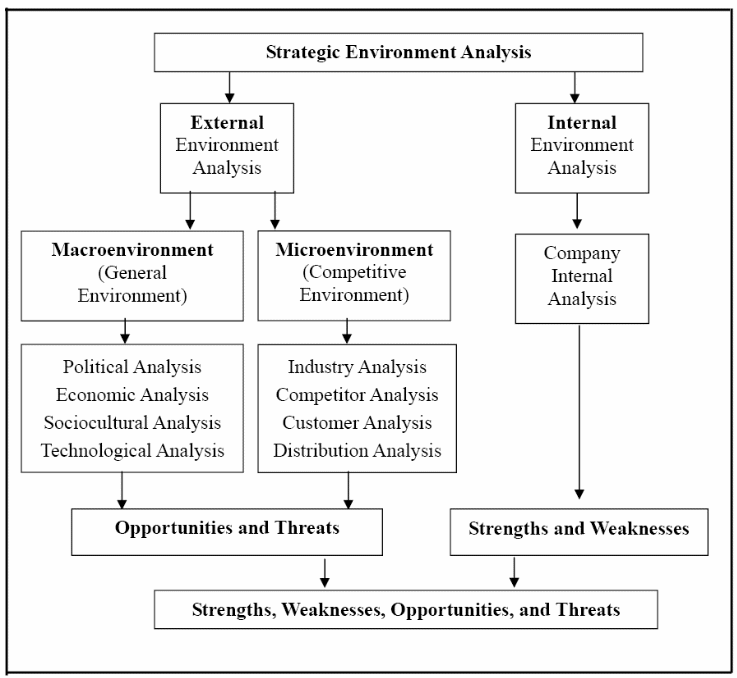
External or macro-environment analysis
Morrison (2010) pointed out that ellipsis of the microenvironment or the external environment of an organisation has referred to as the “PEST/PESTEL analysis” where politics, economy, society and the technology has placed and analysed. In another form, the PEST analysis has defined as the ecological scrutinizing. For long-term strategy formulation or construction of organisation’s vision, PEST breakdown is a significant tool that has supervised as well as appraised dynamics under this section, which is durably influenced an organisation’s functional and operational actions. Several researches on microenvironment analysis have reached at a common conclusion that an organisation’s performance evaluation has most accurately designed through the ecological breakdown of the firm. Moreover, seize prospects and avoidance of the potential threats has successfully executed under this supervision. (Morrison, 2010)
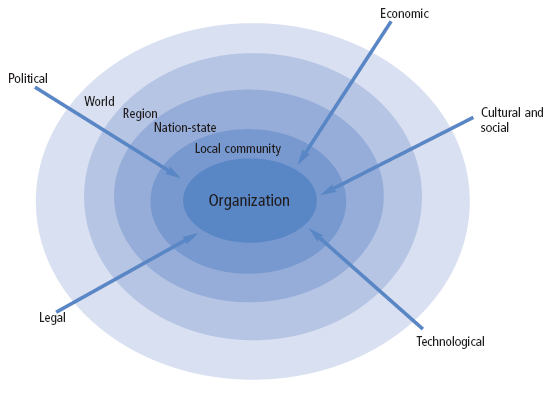
Strategic Steps of External Environment Analysis
Moss (2009) described that the significance and definition of the macro environment of an organisation and circumstances of the peripheral atmosphere have great influences in organisation’s operational areas as well as in effectiveness. During discovering faster and complicated macro environmental factors and formulating the suitable strategies, the macro environment analysis has passed through four-stage technique, consequentially, they are scrutinise, supervise, appraise, and trail. More details are in the following table (Moss, 2009).

Dynamics of External Environment Analysis
Paul & Gerhardt (2002) pointed out that the dynamics of the external ecology requires preparing marketing strategies including politics, legislation, society, economics, and technology. Additionally, legislation forces have required considering the similar core elements during formulation of the strategic marketing illustration. Circumstances that supported to screening threats of the firm over and above process of assumption and scheduling overall course of actions, have principally utilised through following macro environment dynamics (Morrison 2010).

- Political factors: Those consider Political atmosphere and the level of government functionality, budget condition, internal political risk and stability, rate of tax, payroll taxes, export and import laws, global monetary flows etc. Some related legal issues are substantial wage, environmental protection, union, patent and copyright and licensing laws etc. Adequate time and energy should be devoted from organizational level for getting learned about regulations, obeying them and developing sound relationship with legislating bodies and their representatives consequently (PDO, 2009).
- Economic factors: Several sub- elements of this environment are GNP or GDP per capita, inflation and unemployment rate, economic growth, rate of currency exchange, balance of trade and payment, trading partners, rate of exchange etc.
- Socio- cultural forces: These incorporate different demographic variables, personal attitude, cultural structure etc. (PDO, 2009).
- Technological forces: Here, the sub- elements are productivity, sophisticated production method, any sort of new technology, which can affect corporate performance, easy access, and expenditure of technological orientation etc.
Legal and Political Structure
Zhang (2008) added that in case of international business operation politics, legislation affairs have a great deal of influence on the organisation’s decision-making procedure, functional and operational areas, and on effectiveness and efficiencies. The key objective of the political and legal affair consideration of the target market’s political steadiness is to defend the unforeseen situations and occurrences in the target market’s location. Effects of the unforeseen situations have large depressing effect on organisation’s business activities. For instance, durable conflicts, strike of the root-level employees, violent threats, etc are the unforeseen situations.
On the other hand, business firms need to analyze business and commercial acts of the government, legitimacies of the tax payment, privatization policies, and labour laws, legal documents with the MNCs, regional trade affairs, and consumer rights. Among these legitimacies, there are significant roles of the MNCs policies. Additionally, commitments of the WTO (World Trade Organization) members and instruction of the IMF (International Monetary Fund) are also considerably noticed in this section. Finally, mission and goal of the commercial and business legislations instruct a business organisation to look after their business operational areas to stay free from the unforeseen situations and uphold continuing social and consumer responsibilities as well. (Zhang 2008)
Economic Policies
Datta (2005) stated that the economic policies of a country have covered following areas and other than these indicators, there are several significant regions, which have also equal involvement during formation of country’s economic policies. Additionally, these economic dynamics are also indispensable for the continuation of business operation in both home and abroad.
- Economic growth: it determines whether a country would be treated as developed, emerging, and developing or under developed;
- Inflation: high inflation rate resists prosperous economic development
- Monetary and fiscal policies: Monetary and fiscal policies are modes of foreign exchange rates, foreign reserves, stability of the commodity prices, employment ratios and most importantly gold reserve of a country,
- Foreign exchange rates,
- Income changes and distribution policies of the government,
- Annual budget deficits.
Additional economic dynamics
- Establishment of the international trade based on country’s industrious power.
- Foreign Direct Investment (FDI).
- Gross Domestic Product (GDP).
- Investment criteria and flexibility as well.
- Consumption percentage.
- Balance of payments.
- Banking structure and performance.
Societal and Cultural Forces
In broader form, society and cultural forces have compacted with both demographic and physical circumstances in which following components are indispensably correlated. Additionally, cultural diversification of the society has also influenced a lot (Datta, 2005).
- Percentage of the potentiality to transform profession or occupation.
- Change of habitual lifestyle.
- Assumptions of the social responsibility or common people’s awareness.
- Demand of both individual and social ethics and norms as well.
- Initiatives to protect and prevent environmental pollution.
- Workforce diversity.
- Common people’s living standard along with per capita income.
Technological Development
Technological development of a country refers to the literacy rate or in other words, to the ratio of the skilled and trained human resources or workforce. Following are terms of positive technological development (ALOA, 2004).
- Modern technological development.
- Modernization of the methodology.
- Modernization of the product and service quality.
- Invention of substitute technologies.
- Modern technologies to develop information infrastructure.
- Exchange of technological advancements.
- Percentage of Internet users.
Chinese Policy towards the Multinationals
The People’s Republic of China (PRC) is the inhabitant of socialist economy, and it turned into the ‘raising tiger’ of global economy whilst under the full control of communist party. The Politburo of the Communist Party is the supreme authority that has driven to the market economy and welcomed foreign investment from seventies with strong reservation and control of the party upholding the national interest.
Kroeber (2006) pointed out that the economic growth model of China has integrated the objectives of the traditional open economic development viewpoints though the policy makers are rigorously controlled by socialist political economy due to the complete monopoly of Communist Party at the stare power. As a result, the extent that is necessary for quick raise of open economy to bring massive reformation has been delayed in the name of political stability, the esteem openness for the MNCs has not been allowed for investment and trade, but due to emerging economy, MNCs are eager to take entry in Chinese market and straggling for reformation.
The Chinese policy respond to the MNCs is to check and balance among the high FDI flow, huge offshore manufacturing, education and technological development and the low cost human resource while the MNCs is eager for reformation towards an open economy and uncontrolled local market and exercise to influence at the policy level.
FDI Motivation
Ford et al (2010) pointed out that the development literature of China has been deeply concerned with the relationship among extensive stage of FDI and economic growth though it has not been determined the interdependence of FDI and GDP growth due to there are some influential factors those deliberately kept positive role for proper use of FDI for national prospect. The endogenous growth theory pointed those influential factors as household capital stock, skilled human resource, innovative technology, openness, and slow, but sure liberalisation of the economy has ensured the FDI flow to utilise in productive means though FDI has significantly direct influence on creating employment opportunity.
At the beginning of 1980s, China has achieved enormous success in utilising foreign investments throughout manner of FDI. Consequence of this employment, their economic growth has boosted up massively and as well besides FDI, MNCs has significantly donated key role in the advancement of Chinese economy. From the beginning of 1990s to mid 1990s China has titled as the second leading FDI country in the world (State Statistical Bureau 1997), for instance, within 1996 China was employed $283.94 billion FDI invested by the famous MNCs. Due to the FDI graph has touched the boom point, now China has the most accelerating economic restructuring nation globally. Chinese open door strategies were the key motivation for entrance of the FDI remarkably and therefore utilise their largest inhabitants in terms of economical labour approach. Now after the end of 2003, China has established themselves as a gateway for both of FDI and MNCs (Zhang, 1998).
Conversely, the renowned MNCs like Intel, Microsoft, Coke, PepsiCo, McDonalds and so on in China has now treated as an intercontinental host to produce and promote their products and services globally. Additionally, MNCs market penetration as well as highlighting them both in the developed and developing countries China has opened several universities for the innovation and development of new technologies. Consequently, China has targeted their three imperative cities (Beijing, Shanghai and Guangdong) to execute spacious market orientation, modern technology invention, and expert workforce development (Motohashi, 2005).
Objectives of MNCs & PRC
To widen economic growth China has mostly focused on durable economic forcefulness and it has earnestly employed its futuristic schemes. Thus, futuristic strategies of China have embraced ample scale of FDI, M and A of innovative skills, and joint ventures, franchising and licensing have cultivated, but to spirit up Chinese local industries, PRC has made available subsidiaries in terms of both discounted loans and interest free loans. Here, it has to be emphasized that PRC has always concentrated on common people’s living standard first through economic sovereignty, privileged tax payment and welcome entire entrepreneurial initiatives taken by the local industries and national defence.
Additionally, PRC has preferred to fortify their software industries by cut down tax payment, export privileges and hence PRC has estimated to earn RMB $10 billion during the current year. Besides the PRC, MNCs in China has also wished to proper behave with the open door policies in terms of employing young and skilled workforce though their key purpose to seek profit from China. For example, foreign IT firms (Microsoft Oracle, Google and Hewlett-Packard) have enjoyed several of unethical advantages to protect their intellectual properties by either legitimately or illegitimately. However, in several cases China has suffered from spoiled of their researchers’ proposals. Thus, in several cases Chinese vision to shore up their software industries and reduce unemployment ratios has held down by the MNCs. At last, it can be pointed that both the PRC and MNCs in China has still faced conflict over their strategic limitation or inflexibilities (Jackson, 2010).
Conflict among MNCs & PRC Government
According to the view of Blanchard (2007), within last 30-years MNCs over the world has boosted nine times compared to 1970s when there have only 7000 MNCs globally. At present, globally, there have in excess of 60,000 MNCs internationally whilst thousands of most famous MNCs have contributed on 80% international industries, but among them only 4.3% global GDP has resulted by only hundred leading MNCs. In case of China, from 2004–06 their number of MNCs has increased over 30,000 than previous period while this large number of MNCs has added an outstanding function in the economic escalation of China. Moreover, in China, MNCs has occupied more than twenty four million workers and 90 of the entire Chinese exporters have overlooked their several market segmentations as well as several industries like beverages. During this globalization era, MNCs has grasped immense power by utilising their huge returns, logistics, and supply chain management, brand image. Hence, MNCS in the international market have privileged to enjoy over local industries. All of these profit-oriented tasks have inspired to affect international government policies and ultimately generate inconsistency with the international administration.
The Microsoft case analysis in China has evaluated that all of the inconsistent matters arrived as an outcome of the “School of Thoughts” where JVs of the Microsoft in China has primarily occurred through an agreement of acquiring Microsoft’s software. On the other hand, Chinese administration has obliged the Microsoft to invest into their economy in terms of opening educational institute, training centre, and research organisation. Additionally, China has demand for discounted option during sale of PCs in China. Microsoft has denied this proposal and hence impact of the strategic “School of Thoughts” has assembled inconsistencies between these two parties (BruceHall & Biersteker, 2002).
Corporate Strategy & Chinese Economy
Chinese people have treated the term “strategy” as the behaviour of struggling whereas practice of business strategy has become rather modern in China. Hypothetically, corporate strategies have drafted entire guidelines in order to establish both stable and durable economic atmosphere. Corporate strategies of the Chinese MNCs have mostly concentrated on profit seeking by utilisation of the three-phase strategic formulation model. Following are the significant segment of Chinese economic development (Zhanming, 2001).
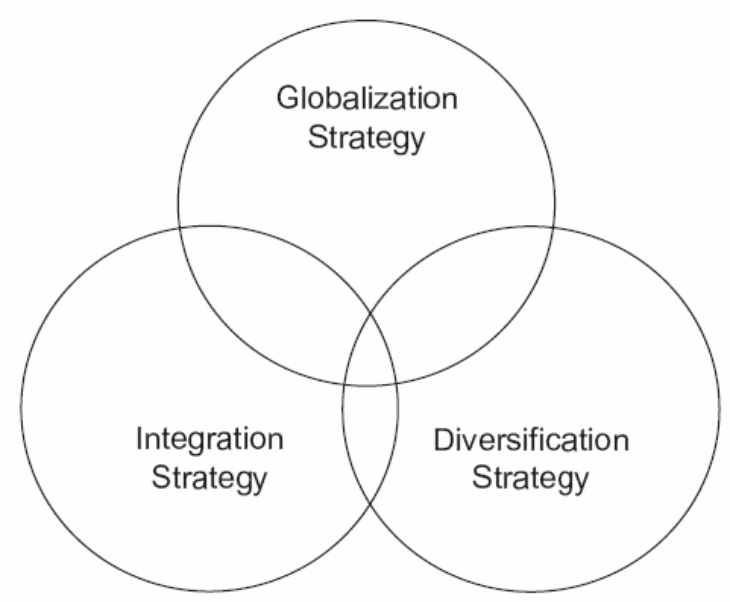
- In eighties, Chinese administration has mostly governed through planned economic scheme and most of the SOEs have manufactured to contribute several target industries.
- 1990s the revolutionary period of Chinese economic system whilst practice of corporate strategies have started
- From 2000 to present, practice of corporate strategies in broader form establishment of the market economy has significantly diverse from the planned economy.
An unusual practice of Chinese business holders has that they have implemented their strategies through precise form as well as awfully before entrance into the global economy. Contradictory issues of this policy has described in below.
- According to the planned economy, there is no opportunity to make decisions since all of the authoritative power was in the state’s hand. More specifically, volume of production and sales was determined by the state.
- Ambiguous property rights restricted organisation’s decision-making authority and still now Chinese government has nominated corporate leaders.
- Conflict among turmoil planning with corporate strategies and hence, durable economic stability has restrained.
Chinese Political and Cultural Influence on PepsiCo & Coca-Cola
This part of the paper has concentrated on Chinese external environment components, which have significantly affected both strategy formulation and implementation of the MNCs (Multinational Companies). During entrance in China, international beverage companies like the PepsiCo and Coca-Cola have noticed two major aspects low cost over and above broader transition. Political and cultural factors of Chinese environment have disclosed several competitive assistances through which these two prominent beverage companies have economically formulate their strategies as well as perform better China. Some of them are- scope of economically employ of Chinese mediators, establishment of the brand name image, scope of establish JVs (Joint Ventures) as well as franchising with the local Chinese partners, supply of loyal and skilled workforce. Besides these advantages, CEO of the MNCs has kept durable pledge with Chinese market (Yang, 2007).
Influence of Chinese Culture and Politics
Lin (2000) 67% of the Chinese citizen has lived in rural areas with abundant new market potentiality. During discussion of the effect of Chinese culture, the term “Guanxi” came forward, which refers to “cordial trade-offs between family and societal members” since Chinese cultural and political atmosphere and social values have fabricated through collectivist bonding and socio-communist influence. These signs of culture and politics have shown the manner to understand consumer behaviour, entry and exit barriers of the market, marketing and selling strategies of an organisation (Lin, 2000).
At some point in characterization of Chinese cultural variation, China has enriched with 56 cultural components, 85,000 alphabetic characters, and 80 dialects in addition to greatly of diverging savours, whilst advertisement of new product and service in Chinese market, marketers be required to aware of these cultural dynamics. For instance, before entrance into the Chinese market, Coca-Cola studied on 40,000 characters to launch Coke as “Ke-kou-ke-la” which is most intimately a Chinese phonetic and literally, it is rendered as “happiness in the mouth” which is also the slogan of the Coke globally since its creation. Conversely, Chinese open door policy has assisted international beverage companies supply chain management, bottling, advertising, and selling (PSFK, 2010).
Performance of Coca-Cola and PepsiCo in China
During entrance into foreign markets MNCs has studied on the internalization theory to appraise prospect of the new market and first of all, transportation cost as well. Coke has preferred China as their new entrance since 1979 because of high GDP growth around 9% and large number of population. Due to planned economy of China, Coke has mostly faced rationale behaviour to live their local industries. In time of entrance in China Coke has followed “fifty-fifty joint ventures” to launch their bottling plant operation. However, in that time they have no authoritative power to take managerial decision of the production and sale volume. Common behaviour of the MNCs has favoured WOSs (Wholly Owned Subsidiaries) during foreign market entrance.
However, Chinese economic system creates stress on the Coca-Cola and PepsiCo’s strategies in operating business function. Consequently, Coke has needed to choose franchising besides it existing joint venture partners. Overall business operation of the Coke in China has developed through three phases where entry-level has occurred from 1979 to 1984, secondly since rationale approach, from 1985 to 1992 they have lessen their bolting plants with the local partners and third, from 1993 to till now Coke has achieved several successes in China. They have merged with another two overseas bottling companies, gain minority share of 25% over and above authoritative power for decision making of the production and sales volume. It has to be pointed that due to rationale behave of Chinese administration until 1992 Coke has treated as beverage wholesaler in China. Considering other beverage brands Coke has seized 40% of Chinese carbonated market share in China whether PepsiCo has covered only 15% and for both of them it has to be included other beverage brands like Fanta, Sprite, and fruit juices (Mok, Dai & Yeung (2002).
Anti-Monopoly Law & Performance of Coke and PepsiCo
Chinese government has refused Coke’s US $2.3 billion offer to acquire their domestic beverage company Huiyuan Juice Group Ltd. This issue has reflected the practice of anti-monopoly law by China to protect and prevent destructive M and A by the MNCs. Besides this issue, currently, Coke has operated 52.5% Chinese carbonated, soda and beverages drinks market where as the Pepsi has grasped 33%. Additionally, Coke has marketed both fruits and vegetable juice by 12% market share, but the Chinese domestic beverage company Huiyuan had only 8.5% market shares, and Chinese government has now operated 33% of domestic fruit and vegetable juice market segments (Lawrence, 2009).
Being most close rival of the Coke, Pepsi has noticed to invest large amount in China and their latest investment target has around US $2.5 billion for the next three years to establish several bottling plants and R and D (Research and Development) support to gain 26% profit margin. Current business figure of Pepsi in China has included 20,000 skilled workforces, more than 27 beverage brands over and above five farms (Forbes, 2010).
Besides large amount of investment in China both Coke and Pepsi has faced several complain of disobey labour laws as well as supply of bad foods (The China Daily, 2008). About 90% of local workers of Coke in China have brutally treated as temporary dispatched labour and as well forced to work 330 hours over a month with low wages though Coke has achieved 19% business growth in the first quarter of 2009 with an investment offer of US $2billion. The China Daily (2009) reported that both Coke and Pepsi have struggled to establish in Chinese beverage industry concentrated on around 800 million consumers (Xinhua, 2009).
Research Methodology
Introduction
The primary goal of this chapter is to express how the chosen research methodology will go with the prime goal of the dissertation inquiry and how it will complete throughout the current study.
Research Design
In order to originate the paper, the researcher would apply both exploratory and descriptive research approach. At this point, exploratory research would assist to originate a problem or explain it more precisely, develop theories, find out research questions, and determine priorities for further research, etc. On the other hand, descriptive research approach would assist to decide the perception of product or relevant groups and to illustrate market characteristics or functions by analyzing secondary data, surveys, panels, observational and other information. However, the researcher would concentrate on both qualitative and quantitative research approach to discuss on the external environment in China and its effect on foreign beverage companies.
Primary research
Bogdan & Biklen (1998), and Marshall & Rossman (1999) stated that primary data should gather for the specific motive or resolve the research dilemmas. Therefore, this study would consider this method in order to observe the actual cultural, legal, and political position of China for foreign beverage companies. To organise this paper, the researcher would consider four target groups to gather data from questionnaire. However, the following table shows more details about the target groups –
Table 1: – Target Respondents for Survey. Source: Self generated.
Selection of Interview process
Yin (2003) and Skinner & Ivancevich (2003) stated that face-to-face interview is the most prominent system to collect data from target respondents. However, the researcher had not chosen this method considering short time limit, total number of respondents, and budget. In this circumstance, the researcher used more instantaneous methods to serve the existing purpose, for example, traditional telephone, e-mail, face book, twitter, and so on
Secondary data
Due to availability of information on the external environment in China, the researcher had the opportunity to use those sources to organise the paper. Cohen, Manion & Morrison (2007), and Zikmund (2006) pointed out that secondary data is the processed data for performing present research. Malhotra (2009) and Saunders, Thornhill & Lewis (2006) stated that secondary sources are the published works of prominent writers and researcher, such as, magazines, books, journals articles and former research works. They further added that these data are easily accessible, inexpensive, and promptly obtainable for the purpose. In addition, this type of information is the base of exploratory research approach.
On the other hand, the effect of external environment of China on foreign beverage companies is the unique topic for research. In this context, the outcomes of existing research would enhance to identify research problems and possible solutions. However, the author of this study would use Mintel reports, the annual report 2009 of Pepsi Cola and Coca Cola, related research papers on external environment of China, several journal articles, other internet resources, books, past survey reports, and so on.
Questionnaire Design
Questionnaire is one of the most significant portions of the quantitative research as it helps to gather primary data (Sekaran, 2006). Malhotra (2009) stated that questionnaire designing is an art not science, so the researcher has the opportunity to give highest effort on this aspect to prepare questionnaire in his own way. Malthotra also addressed that broad discussion with selected respondents might bring unreasonable outcomes with different inspection and attitude while specific questionnaire assist the interviewees to consider with a particular research problem.
In this case, the researcher specially concentrates on designing a questionnaire as recommendations, conclusion, and the findings chapter of this dissertation would develop from the response of the target respondents.
Data Analysis process
At this point, the author of this paper would edit all the information to eliminate the irreconcilable and untrue data about the external environment in China and its effect on foreign beverage companies. However, it is essential to mention that the writer would verify primary data in view of secondary data sources connected with the case study of Coca Cola and Pepsi Cola in China. To formulate the paper, the researcher would compare and contrast the primary and secondary data concerning the impact the external environment in China by presenting graphical charts and using other explanatory research approach.
Limitation of Data Collection Procedure
The main problem of the data collection process was limited time as the researcher had decided to gather primary data from 40 respondents, which was difficult task to perform within short deadline. In addition, lack of secondary data, unreliable documents, inappropriate information, and cost of the academic reports were the key trouble to collect information to complete the paper.
Data Analysis and Results
The fundamental issue of data analysis chapter is to discuss the results of the real survey to estimate and evaluate the external environment in China and its effect on foreign beverage companies.
Name of respondents
The aim of the researcher to ask this general question was to introduce with the respondents of the survey.
Integration with the PepsiCo and Coca Cola
Survey report demonstrates that among the respondents, the number of Midlevel Management of PepsiCo was 10, Midlevel Management of Coca-Cola was 10, Owner of Franchise or Retail outlets were 10, and Academia and Social Groups were 10.
Grouping respondents by gender
Among 40 respondents, 24 respondents (60% of interviewees) were male and 16 respondents were female.
Grouping in accordance with Age
Answer to this question shows that there were 16 respondents of age group 18 – 27 Years, 6 respondents of age group 28 – 37, 10 respondents were 38 – 47 group, 5 respondents were of 48 – 57, and 3 were 58 and up group.
Experience in the Chinese Beverage Market
Survey report demonstrates that only 2 respondents had less than 1-year experience, 15 respondents had 1-5 years participation, 18 respondents were with 6 – 10 years experience in this sector, and 5 respondents were above 10 years experience in the Chinese Beverage Market.
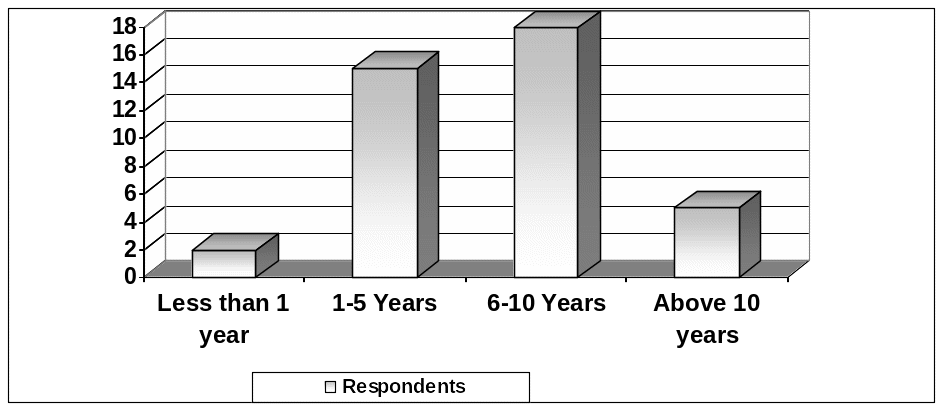
Knowledge about the Challenges of PepsiCo and Coca Cola in China
According to the reply of this question, 28 respondents had knowledge about the challenges of PepsiCo and Coca Cola in China, but 12 respondents had no clear understanding about such challenges.

Conflict with government or their joint venture counter part
It is interesting that 90% respondents believed that PepsiCo and Coca Cola in China have conflict with government or their joint venture counter part.
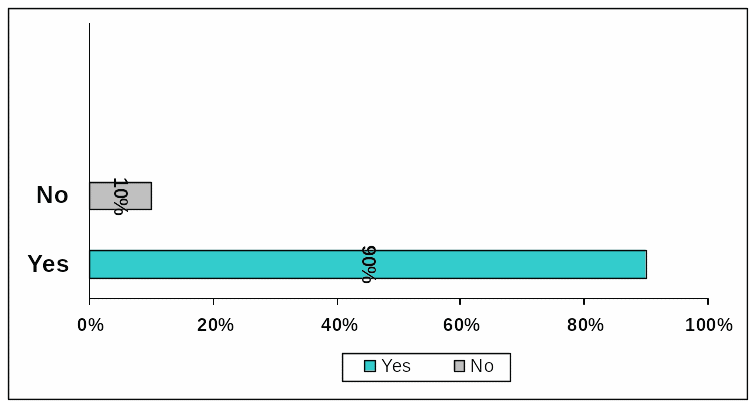
Tolerance level of such conflicts
Among 40 respondents, 24 respondents seem that conflicts with legal system or other contractual issues are not major problems for PepsiCo and Coca Cola in China as they have enough experience to control the company in such environment. On the other hand, 80 respondents believed that conflicts create hindrance to make profit from China.
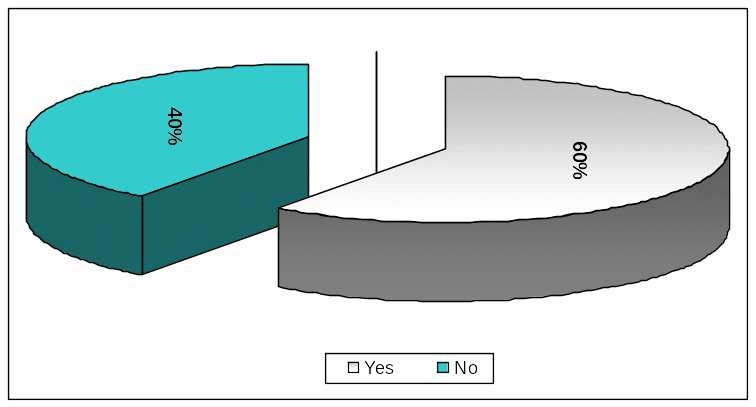
Perception about the cultural change of Chinese people
Among the respondent 70% respondents think that Chinese people come out from disciplinary cultural of materialist tradition, but 30% respondents argue for further change.
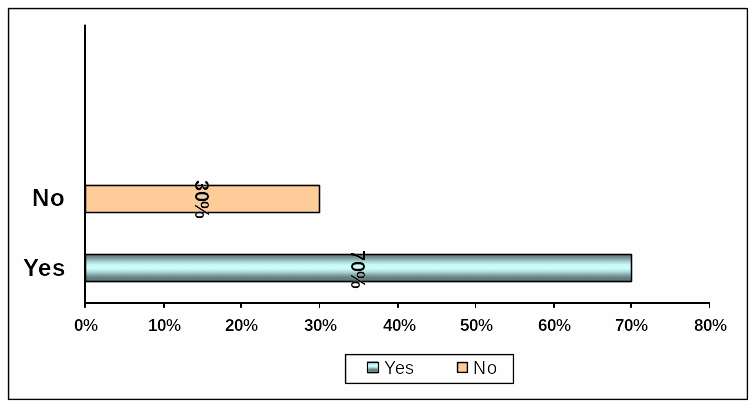
The People’s perceptions for foreign beverage companies
The researcher find out that 80% of total respondents selected yes option and only 20% respondents stated no option.
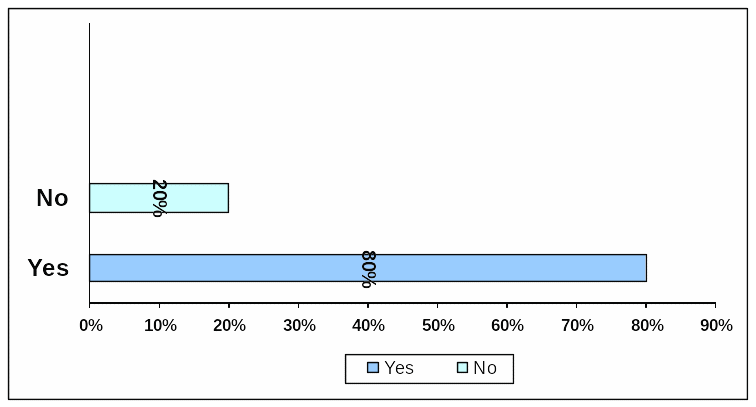
Migration and transactional cultural adoption in China
According to the view of 70% respondents, migration and transactional cultural adoption in China is not difficult for foreign beverage companies, but 30% respondents showed different view.
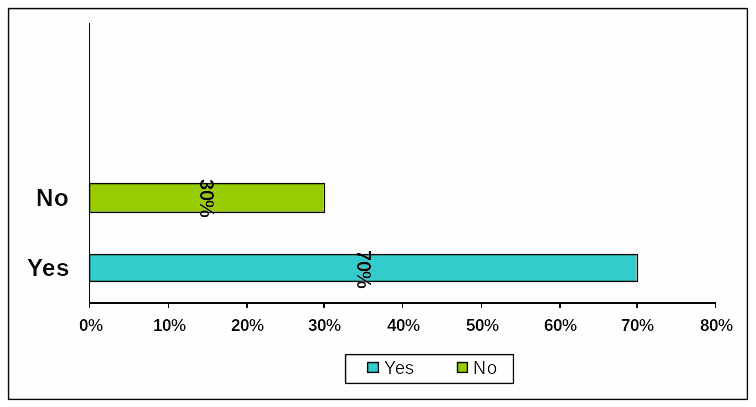
Chinese people value to their tradition or they are western faced
In reply to this question, 50% of the respondents mentioned Chinese people value to their tradition and 50% respondents disagreed with the statement.
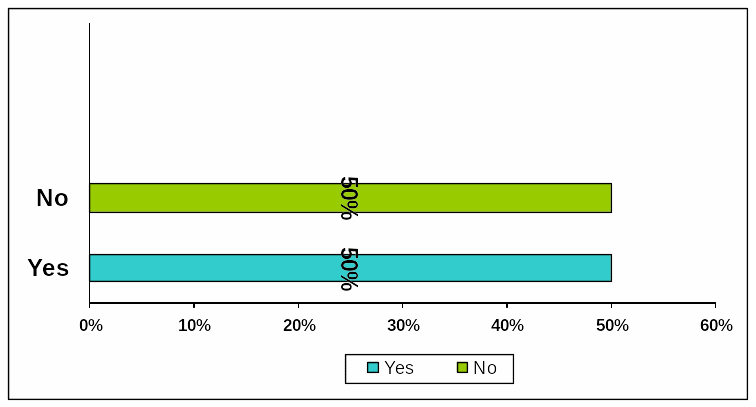
Influence of foreign beverage companies in Chinese culture
About 45% respondents argued that foreign beverage companies in China aimed to turn Americanization in Chinese culture while 55% respondents said they try to uphold Chinese culture.
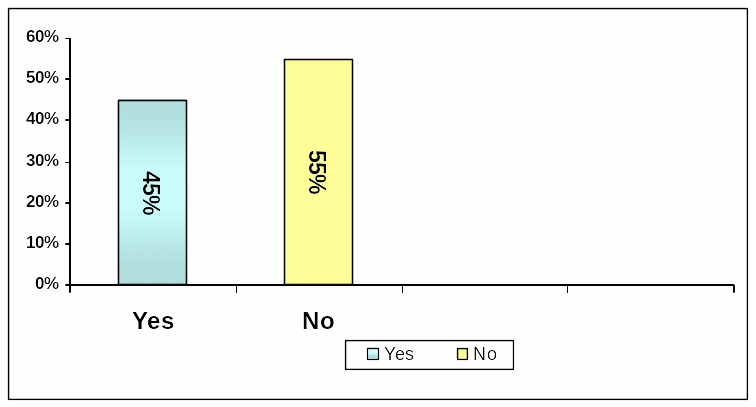
Respondents view about the Position of new generation
According to the following figure, about 80% respondent believed that the new generation would be capable to overcome the conflict of Chinese and Americanization.
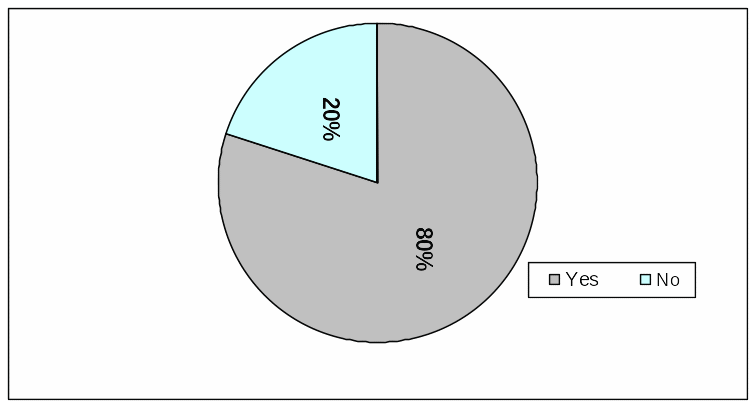
Political consideration for the PepsiCo and Coca Cola
It was one of the most important questions as it was directly linked with the topic of this dissertation. In reply to this question, 60% respondents selected option B while 40% of the respondents seem that Chinese political liberalisation is well fitted for the PepsiCo and Coca Cola.
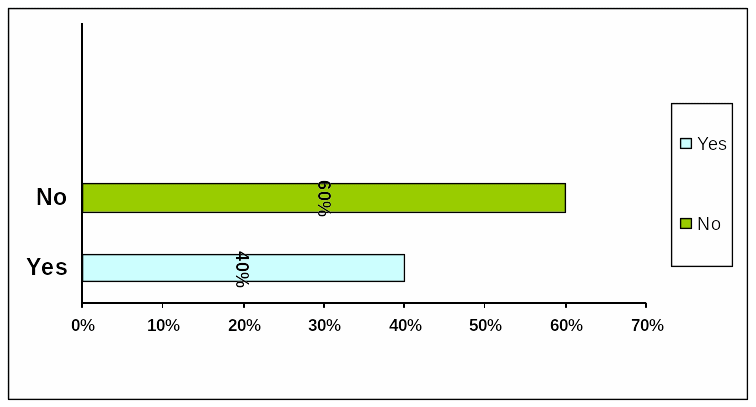
The attitude of government officials towards the PepsiCo and Coca Cola
About 65% of total respondents believed that the government officials are aimed to control rather than cooperation to the PepsiCo and Coca Cola. On the other hand, 35% respondents possessed different view.
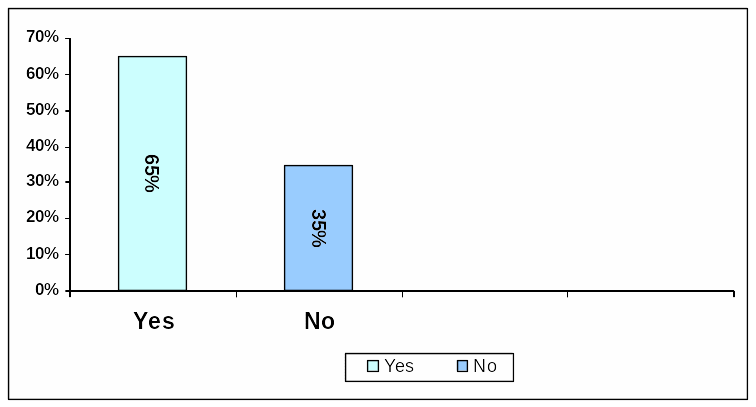
Approach of the Chinese Legal system and courts practice
It is unfortunate that Chinese Legal system and courts practice discrepancy among the foreign beverage companies as 65% respondents agreed with the statement and 35% respondents agreed with the statement.
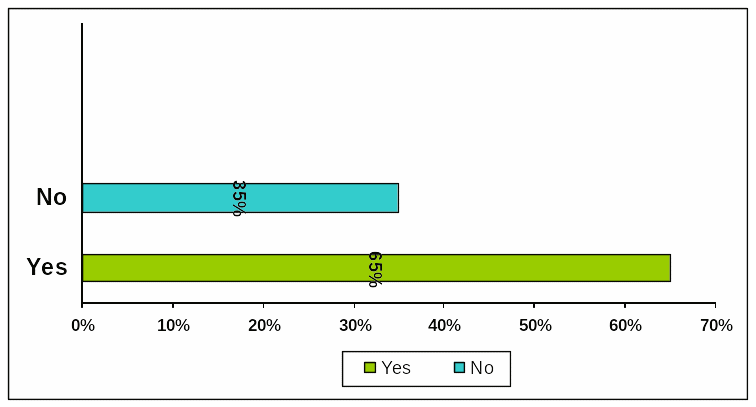
Cost advantage of Chinese market
Among 40 respondents, 95% respondents confidently said the foreign beverage companies consider China as a heavenly market for Cost Advantage.
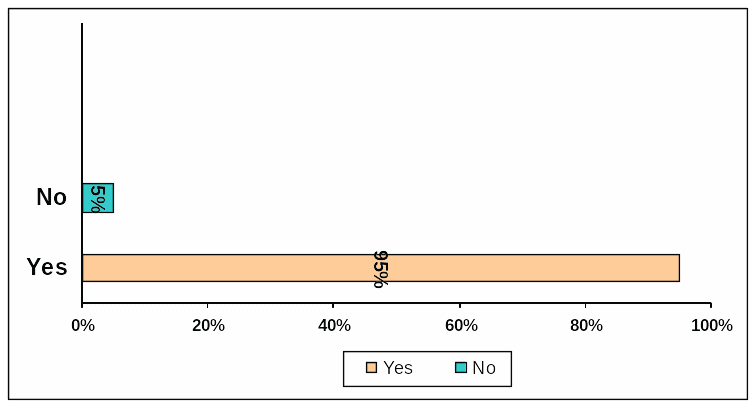
Value added opportunity to the foreign beverage companies
From the feedback of this question, researcher of this dissertation finds that 85% respondents confidently agreed and 15% respondents disagreed with the statement.
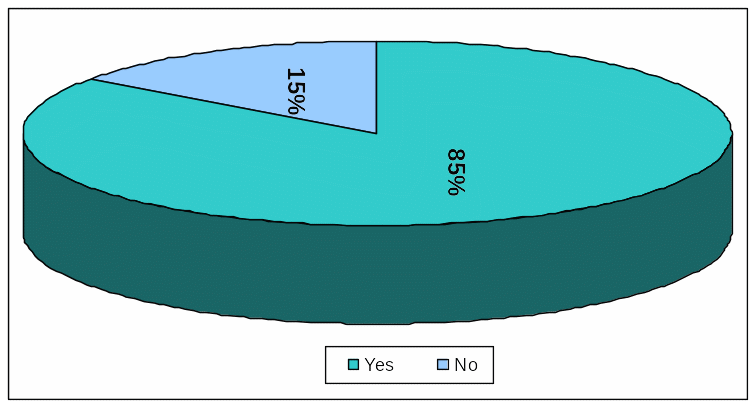
Discussion
A special case of Coca- Cola
As noted earlier, Coca-Cola is the one of the most giant soft drinks producers in China as it is its seventh- largest market. Since the company manufactures supplies and delivers all of its items within the national border, it has to follow some districts rules and regulations of the government approval. However, it was not so simple for the company to sustain over swiftly within the sensitive legal and political barriers of China. Thus, Coca- Cola along with other overseas soft drinks ventures, like- Pepsi, is willing to view China reformulate its administrative policies. It encompasses on a fresh bottling plant recently entails three year wait to be approved by the government by focusing on volume of production with annual re- authorization (Weisert, 2001).
According to the annual Report 2009 of Coca-Cola, China is one of the largest markets for the company, as Coca-Cola has earned 78% of its total profits from Japan, Mexico, and China. Coca-Cola (2009) reported that it experienced 16% growth in China this year.
Regarding the domestic cultural issue, Coke has adopted the core strategy as “Think local, act local”. By such follow- up, it has gained a special position in the mind of Chinese customers as their own cola. However, China is not the single nation for which it has adopted such motto rather than it is its global vision as a symbol of making cultural integrity with that particular country. It is also said that the company’s success in China will be dependent on the capability of making balance of localization in association with a clear and beneficial line of offer. Besides this, the company has provided the domestic managers control on advertising functions. Moreover, Coke is significantly investing money in advertising as invested by $26.1 million in 2000, higher than any other overseas nation. Along with this approach, the company has also used the longest advertisement strategy for gaining brand awareness and local acceptance. Another interesting fact was, it has introduced a collaborative tactics with several Shanghai’s local committee principals for developing brand awareness and sales in 1996 (Weisert, 2001).
Regarding the creation of economic impact, Coca- Cola is the company that has involved merely 15000 Chinese employees directly and other 400000 suppliers, wholesalers and retailers indirectly with RMB 400 million of government taxes in 1998. In short, all such factors indicate the company’s high control of quality in supply network, entrepreneurial capability, and the overall industrial sophistication (Weisert, 2001).
A special case of Pepsi Cola
Yallapragada, Sardessai & Paruchuri (2005) stated that Pepsi started its journey in Chinese market with $2.50 million investment for almost two decades. It became severe competitor to Coca-Cola within very short period, but it was incapable to conquer the new contender in the soft drink market. However, it has invested more than US$500 million in this market over the last 20 years, but it failed to generate expected profit margin from this area as the Chairmen of Joint Venture Company spent abundantly like purchased luxury cars and went on European vacation without permission of the company. However, this company is now trying to terminate the joint venture altogether and intend to build 19 new beverage and manufacturing plants and to enlarge its agricultural existence in China to develop current market position in terms of profit margin of competitors. Yallapragada, Sardessai & Paruchuri (2005) pointed out that China’s current entrance into the WTO is offering some optimism to Pepsi in China.
Involvement of expatriates is the basic characteristics of the operation of Pepsi Cola in China. At present, the company has a control over 7% market shares in this country. Like Coke, Pepsi had also made a strong entrance in the local market with huge capital, modern technology, managerial expertise etc., which are creating a greater pressure on the performance of local beverages.
Competitive Forces Analysis
The level of industrial competition is another factor, which is affecting the beverage companies greatly. To analyze such competition, one the most popular approaches are Porter’s 5 forces model of competition (Cengage, 2010). Such as-

- Customer: – Customer is the most important factor for any sort of industry. Various forces make the bargaining power of customers for affecting pricing and product development criteria (Cengage, 2010).
- Suppliers: – They offer equipment, raw materials, and other supplies. Additionally, labour and capital market should also be considered. If they are powerful, they can influence the prices and profitability consequently (Cengage, 2010).
- Existing competitors: – This factor should be consciously analyzes since the present competitors may create stronger entry barrier for a new firm to enter into the market. Some criteria of served market are particularly important here, as-
- Low growth rate of industry
- High overhead or fixed costs
- Limited product differentiation
- More fragmented market share in terms of competitors
- Difficulty to exit etc.
- Potential competitors/ barriers to entry: – Many variables determine the ease of entrance for a new firm. Therefore, forces, which keep new competitors out by delivering means of protection for present competitive forces, are identified as entry barriers (Cengage, 2010). It also incorporates some issues, as-
- Economies of scale
- Huge capital necessities
- Standard product differentiation
- Limited availability of distribution network
- Government rules and regulations for restricting a new competitor
- Difficulty to copy the existing firm’s capabilities and resources
- Experience of aggressive relationship with current retailers and other channel members etc.
- Indirect competitors/ substitutes: – The organizations, which can meet the alternative needs for a product, are called indirect competitors and that alternatives are called substitutes. For example, in beverage industry, a milk producer can be an indirect competitor of Pepsi Cola.
Upon that light of traditional model of competition, it is also necessary to determine the level and potential scopes of competition in China’s beverage sector. Broadly speaking, this industry is competitive enough for which major ventures; like- Coca- Cola delivers huge effort for developing especial distribution and supply channels to handle competition (Cengage, 2010).
Other external variables
There are also some other external forces which must be realized along with the logical implication (swlerarning.com). Those are pointed as below-
- External stakeholders and uncertainty in the environment.
- Making partnership with external stakeholders.
- Use of traditional and tactical rules to negotiate.
- Consideration of strategic groups etc.
Major industry challenges
In a successive discussion of the beverage industry, in the finishing part, it is necessary to elaborate some of the major challenges, which are highly confronting the industry, as below-
- Low productivity and smaller amount of production of beer companies that are not enough sufficient to generate favourable economic outcome
- At the same sector, the country lacks the quality of maintaining global standards because of not using advanced technology. It also cannot assure its customers about quality because of below standard packaging ingredients and systems.
- The bottling procedure of beer in China is another vulnerable zone. During 1980, the country had imported several lines of bottles from Japan as well as West and East Europe, which had enlarged the county’s dependence on others in this regard. Furthermore, sophisticated bottling techniques are utilized by very few mega breweries, not the entire industry.
- In soft drink sector, most of the domestic companies do not get the leverage of enjoying capital market advantage. Domestic manufacturers, like- Wahaha, Jianlibo and Robust can be fallen into this criterion.
- Scattered nature of manufacturing. Although there are many players, most of the food and beverage companies are small and medium in size which are not sufficient to yield a very high annual return according to the desired level. Moreover, compared with Coca- Cola, the leading domestic Chinese producer cannot generate intended outcome. There also exists an unfair competition between mega and mini soft drink producers that country.
- As compared with MNCs, the local cola producers are not fast in technology with no specific R and D and product innovation and development sector.
- The country’s capability to fight with global competitors is also limited.
- It also lacks sound organizational system. Like many other industrial segments, the food and beverage segment is also suffering from poor management and productivity.
- Small- scaled dairy industry with limited production than demand.
- High production expenditure of raw milk and unequal production statistics from region to region;
- Slow enhancement of annual milk consumption as influenced by generic level of income and increased tendency of people of dieting.
- Creation of trade as import figure tends to exceed export volume.
FDI perspective in China
The Chinese government is trying to develop a steady and transparent investment policy through the creation of open market economy. It implies the use of standardized and sound managerial climate for enlarging the scope of FDI for a major purpose of utilizing domestic capital, innovative vision, industrial restructuring and regional collaboration between the beverage firms. China’s local government also feels that the impact of changes in the macro environment can also introduce global financial crisis for which the potential of drawing overseas capital in China has fall. Because of comparatively higher vulnerabilities in both the internal and external arenas, difficulty may arise in restoring short- term FDI growth. So, for creating favourable investment in beverage sector, the country will arrange-
- The standard fee and inquiry laws in terms of shifting the jurisdiction of verifying and approving FDI to less public level;
- Providing of more guidelines for restructuring beverage industry to gain more investment. For this motto, huge technological integration, sophisticated production planning, and eco-friendly products should be launched.
- Various overseas beverage groups can motivate others to invest in this sector by establishing R and D units, corporate headquarters, distribution channels, procurement networks, etc.
- Development of supportive policies to establish more beverage firms in the central and western segments of the country.
- Internal infrastructural condition, national technological growth and rate of government patronage also play important role in reality.
Zhang, (1998) argued that ever since seventies China has achieved the great advancement of utilising foreign capital in national growth while MNEs have kept vital role to generating China as the most prevalent home country of FDI of the world.
Motohashi (2005) explained that PRC emphasised on the speedy economic reformation to boost FDI inflow with openness and strapping competition among local governments with market driven approach, technology driven features and low paid human resource motivations to the multinationals. USCBC (2010) demonstrated that from 2000 to, the FDI Inflows in China was US$ 40.7 billion and 2009 it turned into US$ 90.0 billion.
Objectives of MNCs & PRC
Peng (1996) addressed at the Parliamentary Conference that the basic objectives of Chinese foreign policy is to defence national sovereignty, and delivering constructive reformations for openness and renovation by preserving global peace and keeping joint effort for mutual development interest. China being the permanent member of UN Security Council, it is eager to extend cooperation and openness based on mutual interest to ensure national development.
Crucial character of the Chinese political history has rendered as an autocratic nation, which has governed, by the CCP (Chinese Communist Party) since 1949 after end of the Second World War. Monopoly behaviour of the CCP has drastically revolutionized Chinese economic and socio-cultural complicatedness. Additionally, the CCP’s autocratic political power has mostly blitzkrieg common people’s living standard advancement. Local government of China has operated their performances through three level hierarchies, consequently, territory networking, municipal and province and at Last Township along with districts. At the early of 1978, the 12th NCPC (National Congress of the Communist Party of China) has formed the open door policies, which have taken revolutionary initiatives for the development of Chinese common people as well as established more than 100 diverse industries for the rural economic advancement. (Zhang)
Developing and emerging countries as if China has paid influential attention on the escalating globalization top flexible MNCs access into their economy effectively. Chinese economists study has recommended four-phase development program for the MNCs to establish in the Chinese market through penetration, entrance, development and gain experiences for further enlargement. These four-development programs by the Chinese is briefly discussed by the mission, vision and objectives, marketing strategy formulation, proper utilisation of the Chinese workforce. Additionally, Chinese economic atmosphere has also prescribed about the strategy implementation framework thus the MNCs would not be performed any prohibited tasks to demolish local Chinese industries (Cui, 2002).
Foreign investors especially US MNCs like Coca-Cola and Pepsi have taken on a set of business strategies to establish in the Chinese beverage industry and it has to be pointed that Coke has continued their business operation in China for more than 30 years and as any other destination PepsiCo has also flanking rival of the Coke in China. Conversely, Chinese political and economical configuration has preferred FDI, JVs, franchising rather than M and A (Merger and Acquisition) to active their local industries. Additionally, in case of Chinese stock exchange, it has positively responded both FDI and the non-FDI entries in their economy. A reputed research report has appraised that 0.75% responded of the Chinese stock exchange has occurred within two consecutive days before foreign investment. In replacement of the FDI safest preference in China has opened for the JVs with their local industries (Gleasona et al. 2002) .
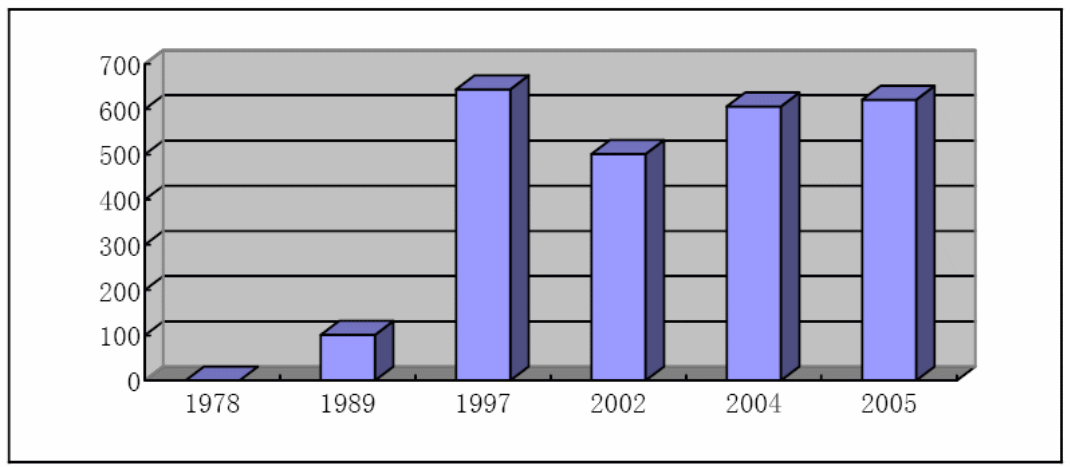
Besides FDI China has also spilled over of the ODI (Overseas Direct Investment) as a reflection of WTO commitments and has said by the Chinese Ministry of Commerce their ODI has enlarged up to $73.33 billion in 2006. (Zhang)
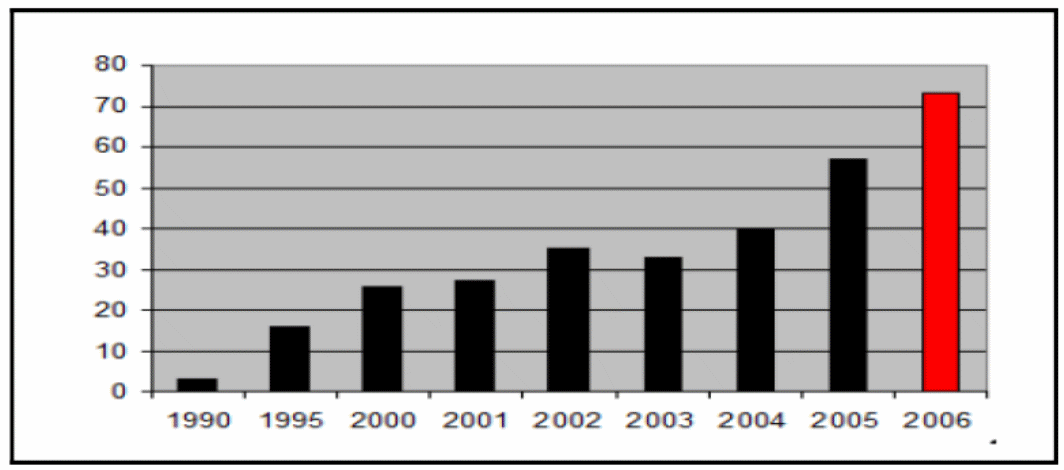
Conclusion
Recommendation
Due to global financial crisis, China has been experiencing very regrettable situation and the government is consciously demanding to protect the growth rates in stable condition and driving the economy to an upper industry value chain while job cut, downsizing, and layoff turned into workers movement. Nevertheless, the calamity in the domestic economy decelerated and it became mandatory for government to prioritize new job creation and policy reformation towards its external environment including social, political, and cultural factors. As the MNCs including the foreign beverage companies are the development partner of China and some of them are seriously impacted with the present external environment of China, this dissertation would go for following recommendation –
- As the present external environment is very challenging, it would be crucial for the managers of MNCs and foreign beverage companies to maintain their short run and long run growth without any downsize or layoff and not to hampering own reputation in the Chinese Market;
- MNCs and foreign beverage companies are urged to maintain cooperative trend rather than conflicting with the government and let government to understand that the MNCs and foreign beverage companies are here to make profit by using China’s competitive advantage, if they cannot do so, how they contribute to their corporate social responsibilities;
- Foreign beverages companies in China may support government’s crisis planning to overcome the economic uncertainty, uphold their standing role to the employees, local communities, and stake holders by communicating with the media through their own crisis management plan which may not conflict with government;
- It is essential for the foreign beverages companies in China to their assess risks and unforeseen events connecting to the external environments and ensure to mobilize internal resources and capabilities to cope with the adverse effect of the unique regulatory bindings until the progress of external environment. To implementing such practice, it is also necessary to have local decision-making power in China office rather than waiting for headquarters’ approval.
- The foreign beverage companies in China may urge to unite in a Podium to espouse a modest and collaborative voice in the barraging with local and central government to improve legislation and let them allow motivating cultural factors, especially all aspects of external environment.
- It has demonstrated from this research that the new generation of China are most liberal and to some extend they are western faced for their cultural motivation, thus to influence the external environments of the foreign beverages companies in China like Coca-Cola and PepsiCo have urged to engage new managers from the Chinese communities recently come out from the universities.
- As the present leadership of China has been hereditary of old disciplinary cultural of materialist tradition, it will take enough time for the joint venture partners to be more cooperative. Until further the new generation comes to the leadership, the foreign beverages companies in China like Coca-Cola and PepsiCo should be more careful about the labour Law and anti-monopoly law of China and adopt diplomacy to avoid conflict with the joint venture partners.
- The foreign beverages companies in China like Coca-Cola and PepsiCo should organise cultural events throughout the country with intention to motivating people, but positively keeping Chinese culture upwards to avoid the blame of Americanisation or westernisation and this will ensure easy access to the local communities.
- The investment in part of their corporate social responsibilities of the foreign beverages companies in China may suggest to involving more in the human resource development and western education and it will generate high social value for the companies in long run.
Conclusion
The external environment of China is still very adverse and constrains for the foreign beverages companies. At the same time the Chinese operation for foreign beverages companies is prospective in long run in terms of low wage rate, availability of raw materials and high populated market all these provide a truly a value added opportunity and competitive advantages to them though legal system and courts practice has demonstrated discrepancy among the foreign beverage companies. The Chinese policy respond to the foreign beverages companies is to check and balance among the high FDI flow, huge offshore manufacturing, education, and technological development and the low cost human resource while the foreign beverages companies are eager for reformation towards an open economy and uncontrolled local market and exercise to influence at the policy level. Under present external environment, the extent that is necessary for quick raise of open economy to bring massive reformation has been delayed in the name of political stability, the esteem openness for foreign beverages companies has not been allowed free operation, but due to emerging economy, they are enthusiastic to take entry in Chinese market and straggling for restoration.
The government of PRC is trying to deal with the complex situation, challenges and gaps persisting with the foreign beverage companies considering the best priority on the national interest while the foreign beverage companies including the MNCs are changing the face of their management and executives in China from the new generation of the country. Excessive escalation of such trend possibly will bring new challenge for the foreign beverage companies as the more educated and qualified Chinese managers would influence the Chinese operations in such way that donates competitive advantage to the Chinese parties rather than the foreign beverage companies. Thus, it would be concluding that this the proper time both for China government and MNCs to working together rather than any confrontation with aim to ensure mutual benefits.
Reference List
ALOA (2004) PEST Analysis: A Level of Achievement Business Studies A Level Resources. [Online]. Web.
Alon, I. Littrell, R. F. & Chan, A. K.K. (2009) Branding In China: Global Product Strategy Alternatives. Web.
BCG (2008) China Report: Studies in Operations and Strategy Overcoming the Challenges in China Operations. Web.
Blanchard, J. M. F. (2007) China, Multinational Corporations, And Globalization: Beijing and Microsoft Battle Over the opening of China’s gates. Web.
Bogdan, R. C. & Biklen, S. K. (1998) Qualitative research for education: An introduction to theory and methods. 4th ed. Boston: Allyn and Bacon.
BruceHall, R. & Biersteker, T. (2002) The Emergence of Private Authority in Global Governance. Web.
Cengage (2010) The External Environment. Web.
Coca-Cola (2009) Annual report 2009 of Coca Cola. Web.
Cohen, L. Manion, L. & Morrison, K. (2007) Research Methods in Education. 6th ed. London: Routledge.
Cui, G. (2002) The evolutionary process of global market expansion: experiences of Maces in China. Web.
Datta, D. (2005) Industry and Macroenvironmental Analysis. Web.
Forbes (2010) Pepsi and Coke Square Off In China. Web.
Ford, J. L. Sen, S. and Wei, H. (2010) FDI and Economic Development in China 1970-2006: A Cointegration Study. Web.
Gleasona, K. C., Lee, C. I. & Mathur, I. (2002) Dimensions of international expansions by US firms to China: Wealth effects, mode selection, and firm-specific factors. Web.
H&A (2009) Corporate Downsizing, Layoffs and Plant Closures in Times of Crisis. Web.
Jackson, A. (2010) Foreign Firms in China Go West to Beat Wage Hikes. Web.
Kao, D. & Mao, T. (2009) Using Km Model To Examine A Form’s External Environment In Strategic Analysis. Web.
Kroeber, A. (2006) China’s industrial and foreign trade policies: what are they and how successful have they been? Web.
Lawrence, D. (2009) Coca-Cola Deal First to Be Blocked Under Chinese Monopoly Law. Web.
Lin, E. H. (2000) Marketing practices of Chinese township enterprises. Web.
Malhotra, N. K. (2009) Marketing Research- An Applied Orientation. 5th ed. Prentice-Hall of India Private Limited.
Marshall, C. & Rossman, G., (1999) Designing qualitative research. 3rd ed. Thousand Oaks – CA: Sage.
Mok, V. Dai, X. & Yeung, G. (2002) An Internalization Approach to Joint Ventures: The Case of Coca-Cola in China. The Asia Pacific Business Review, Vol. 9, No. 1, Web.
Morrison, J. (2010) The Internal business environment. Web.
Moss, L. A. G., (2009) Notes on Strategic Analysis & Planning Methodology. Web.
Motohashi, K. (2005) R&D of Multinationals in China: Structure, Motivations, and Regional Difference. Web.
Nooyi, I. K. (2010) Three on the Bund. Web.
Paul, L. & Gerhardt, P. L. (2002) Environmental Factors of a Marketing Strategy. Web.
PDO (2009) China to further improve environment for foreign investment. Web.
Peng, L. (1996) Main Characteristics of China’s Foreign Policy. Web.
PSFK (2010) Brand News: How Coca-Cola Innovates In China Share. Web.
Saunders, M., Thornhill, A. & Lewis., P. (2006) Research Methods for Business Students. 4th ed. London: FT Prentice Hall.
Sekaran, U. (2006) Research Method for Business. 4th ed. John Wiley & Sons, Inc.
Skinner, S. J., & Ivancevich, J. M. (2003) Business for the 21st Century. Boston: Homewood.
Terhune, C. (2005) To Bag China’s Snack Market, Pepsi Takes up Potato Farming. Web.
The China Daily (2008) Coco-Cola denies labor violation in China. Web.
The China Daily (2009) PepsiCo on China’s blacklist of bad foods. Web.
Tse, E (2010) The China Challenge. Web.
USCBC (2010) Foreign Direct Investment in China. Web.
Wai, T. (2010) EU-China Relations: Economic, Political and Social Aspects. Web.
Weisert, D. (2001) Coca-Cola in China: Quenching the thirst of a Billion. Web.
Wu, S. (2008) Organizational Capability, Entrepreneurship, And Environment: Chinese Multinationals, 1912-1949. Web.
Xinhua (2009) China denies Coca-Cola decision equals trade protectionism. The China Daily. Web.
Yallapragada, R. R. Sardessai, R. M. Paruchuri, M. R. (2005) Doing Business in China: Investor Beware. Web.
Yang, J. Z. (2007) Key success factors of multinational firms in China. Web.
Yin, R. K. (2003) Case Study Research: Design and Methods. 3rd ed. Beverly Hills, CA: Sage.
Zhang, F. (1998) The Impact of Multinational Enterprises on Economic Structure and Efficiency in China. Web.
Zhang, L. (2008) Options for Resistance Strategies of Local Chinese Companies against Foreign Competition in the Chinese Consumer Goods Market. Web.
Zhanming, J. (2001) Corporate Strategies of Chinese Multinationals. Web.
Zikmund, W. M. (2006) Business Research Methods. 7th ed. Orlando: Harcourt Publishers.
Questionnaire
Your name: ______________________________